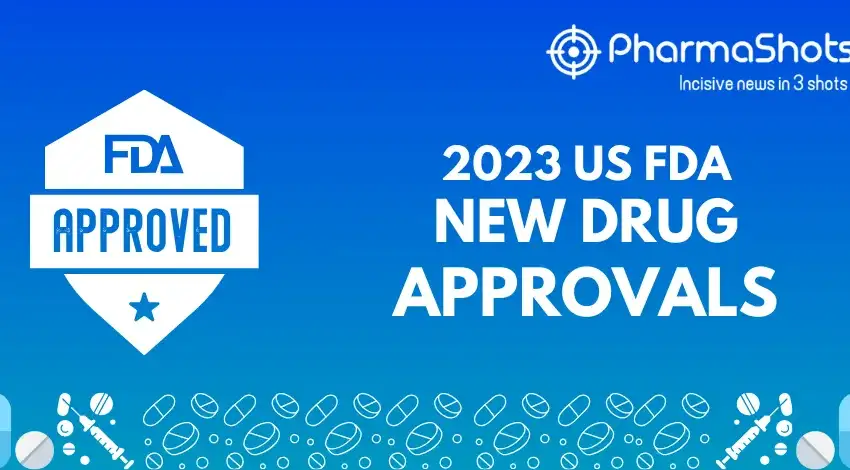Disease of the Month – Glioblastoma
Shots:
- The Disease of the Month report by PharmaShots aims to integrate an advanced approach to disease analysis. The report delves deep into the epidemiology, market size, disease management, available therapies, and key players involved
- For the January edition of the Disease of the Month report, PharmaShots brings an enlightening guide to Glioblastoma, the most common primary brain cancer, accounting for 47.7% of all cases, yet it remains a rare disease
- The condition may develop at any age though, it usually affects men and the elderly. The 3rd Wednesday of July is observed internationally as World Glioblastoma Awareness Day, uniting people to fight against Glioblastoma
Introduction1, 2
Glioblastoma is a form of cancer that begins as a cell growth in the brain or spinal cord. It can penetrate and kill healthy tissue because of its rapid growth. The condition is developed from cells called astrocytes that support nerve cells.
GBM has the potential to metastasize to different regions within the brain. In rare instances, it may also extend beyond the brain and affect other parts of the body.
One can develop glioblastoma at any age. However, it usually affects men and the elderly.
Symptoms1, 2, 3
The symptoms of Glioblastoma include:
- Blurred or double vision
- Headaches
- Loss of appetite
- Memory problems
- Mood or personality changes
- Muscle weakness or balance problems
- Nausea and vomiting
- Seizures
- Speech problems
- Changes in sensation, numbness, or tingling
- Speech difficulty of gradual onset
Diagnosis1, 2, 3
- Conventional MRI: Images are captured both before and after the administration of IV contrast. The contrast depicted on the tumor (i.e. tumor becomes bright on images) indicates higher-grade astrocytoma
- MRI spectroscopy (MRS): This MRI-based imaging tool analyzes the chemical composition of brain tumors by assessing levels of specific chemicals like choline. The output is a diagram showing the relative amounts of these chemicals. Higher choline than NAA may indicate a tumor, though it’s not as definitive as a standard biopsy. It serves as a non-invasive method for assessing tissue composition
- Functional MRI (fMRI): fMRI identifies activated brain regions during specific tasks, indicating critical areas like speech or motor centers. For tumors near critical brain areas, fMRIs provide an important adjunct, especially for surgical planning.
- Others: Exam to test nerves and brain function and biopsy to obtain a sample from a tumor and examine the tissue for cancer cells
Epidemiology3
Glioblastoma is the most prevalent malignant brain and CNS tumor, constituting 47.7% of cases, with an incidence of 3.21 per 100,000 population.
Glioblastoma typically occurs at a median age of 64, more common in men. Survival rates are low, with approximately 40% in the first year and 17% in the second-year post-diagnosis.
Market Size4
In 2023, the glioblastoma therapeutic market size was valued at $1.13B, and by 2030, it is expected to increase by $1.8B at a CAGR of 6.9%.

Management and Treatment2
If your glioma displays any symptoms, you might seek professional help from your care provider.
There is currently no cure for GBM. To alleviate symptoms, treatments are primarily focused on removing or reducing the tumor. The tumor is removed surgically (craniotomy), followed by radiation and chemotherapy. If surgery is not an option owing to your health condition or the location of the tumor, radiation and chemotherapy can control it.
GBM treatments include:
- Radiation therapy: Radiation therapy employs S-rays to kill cancer cells. One may need up to 30 radiation treatments over 6 wks.
- Intensity-modulated radiation therapy (IMRT): IMRT delivers radiation to the tumor while minimizing the exposure to adjacent healthy brain tissue
- Stereotactic radiosurgery: Gamma knife radiosurgery is a type of advanced radiation therapy. Highly focused X-rays are used to target the tumor without damaging healthy tissue. It is used when GBM grows after receiving initial IMRT
- Chemotherapy: Chemotherapy medication circulates in the blood to destroy cancer cells. It is administered at the time of radiation therapy and after it is completed
- Targeted therapy: This therapy targets the cell changes that increase the growth of cancer
- Tumor treatment fields (TTF): A wearable device delivers low-intensity electric fields (TTFs) to the tumor via scalp electrodes, disrupting cancer cell growth after chemoradiation
Product Dashboard

Key Players in the Market6,7

*Tafinlar is approved for the treatment of glioblastoma in combination with Mekinist (trametinib)
*Avastin is approved for the treatment of glioblastoma in combination with two therapies, Camptosar (irinotecan) and lomustine
*Biosimilars of Avastin have also been approved for glioblastoma
*The above-mentioned table depicts drug approval dates in descending order of the US
Clinical Trial Analysis5
Various pharmaceutical companies are working to develop new treatment options, either as monotherapy or in combination for Glioblastoma. As of Jan 3, 2024, about 708 interventional clinical trials have been registered worldwide for Glioblastoma.
Some of the key molecules involved in the trials are LAM561 (Laminar Pharmaceuticals), ASC40 tablets (Ascletis Pharmaceuticals), and AV-GBM-1 (Aivita Biomedical)
Based on geographical distribution, the interventional and Industry sponsored clinical trials are classified in the below-mentioned graph in two groups based on their status i.e., active (recruiting, active, not recruiting, not yet recruiting and enrolling by invitation, suspended) and inactive (withdrawn, terminated and trials with unknown status).
The maximum number of active trials is being conducted in the US, Spain, and Germany, while a minimum of trials was reported in China and Korea (as represented in the graph)


Patient Advocacy Groups (PAGs) for Glioblastoma

References
- Mayo Clinic
- Cleveland Clinic
- AANS Organization
- insight
- ClinicalTrials.gov
- EMA
- FDA
Related Post: Disease of the Month – Pancreatic Cancer




